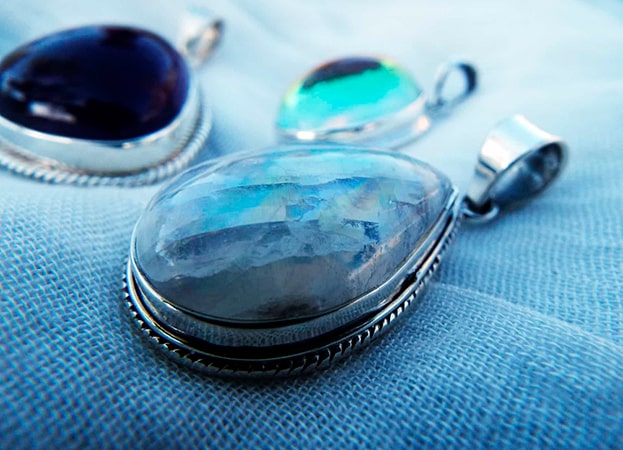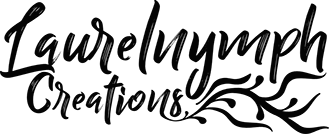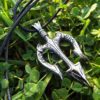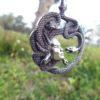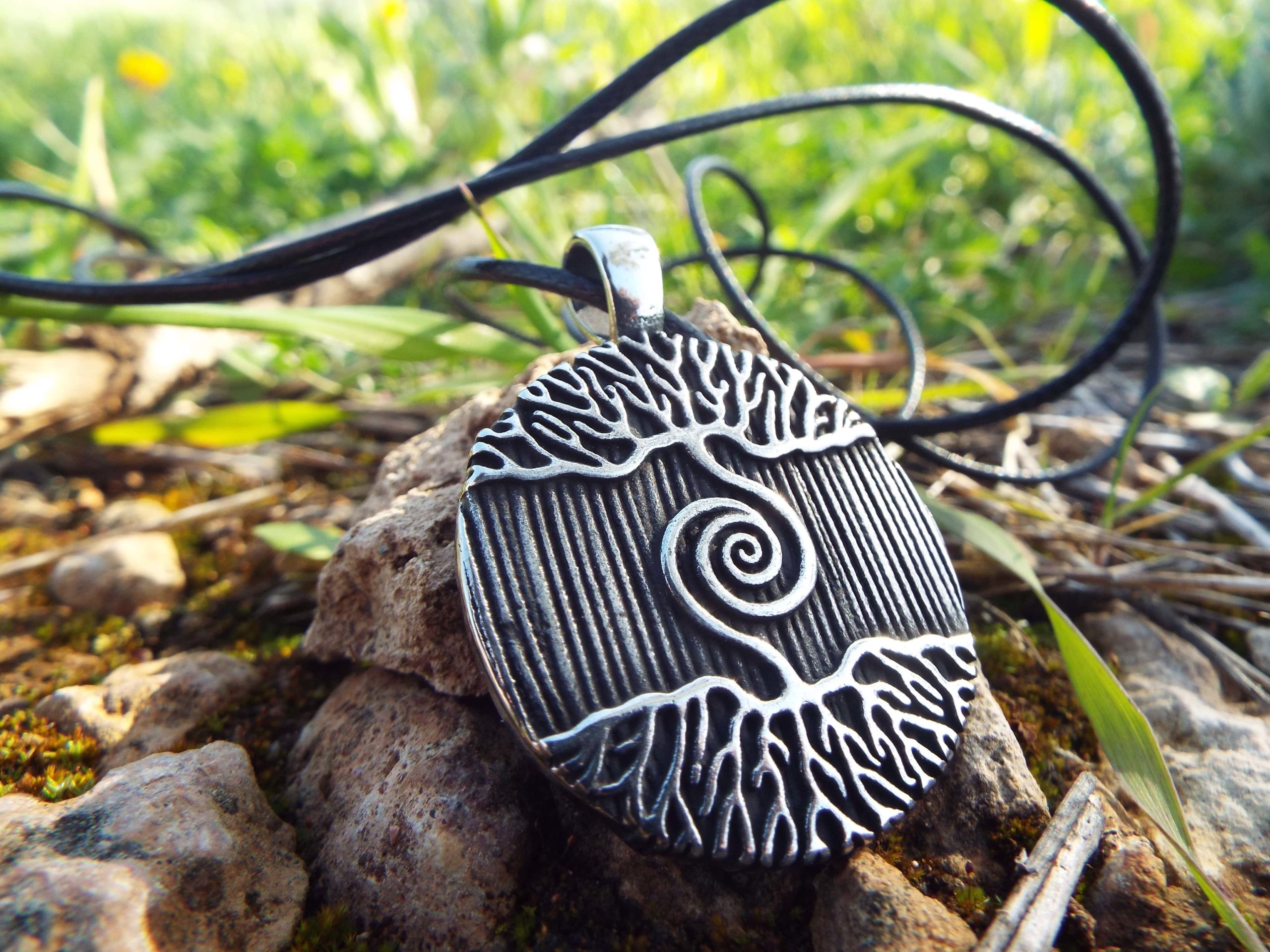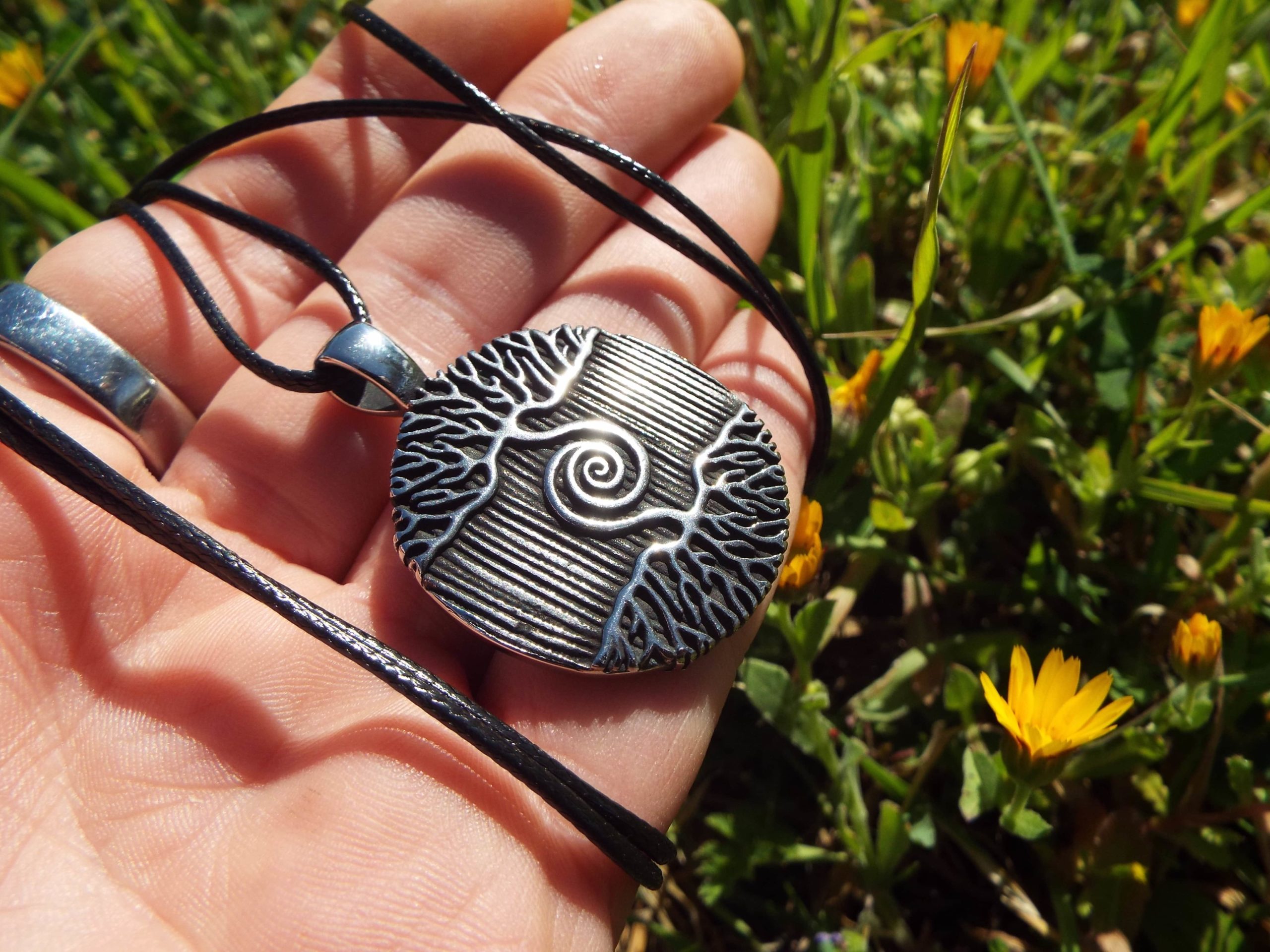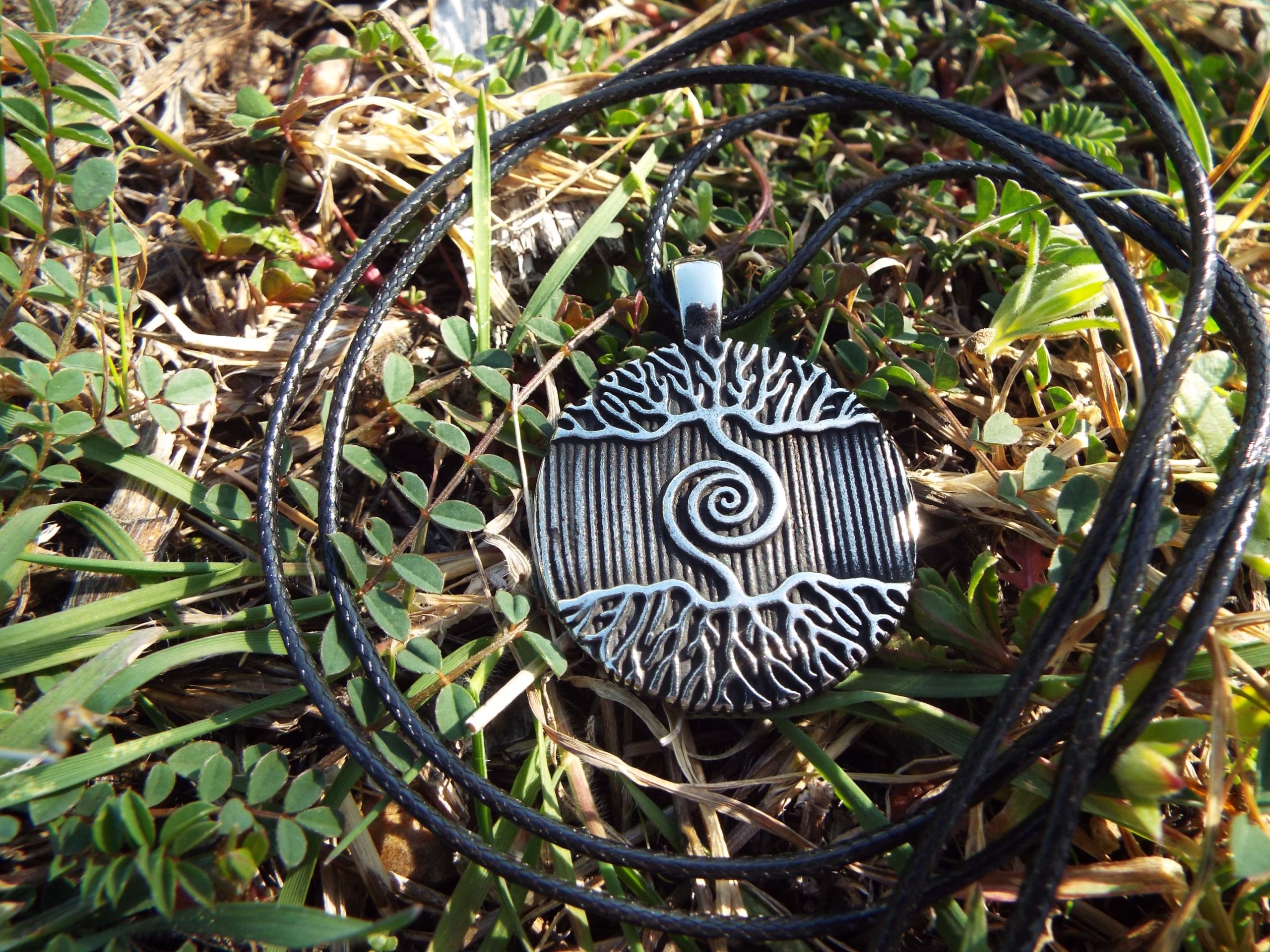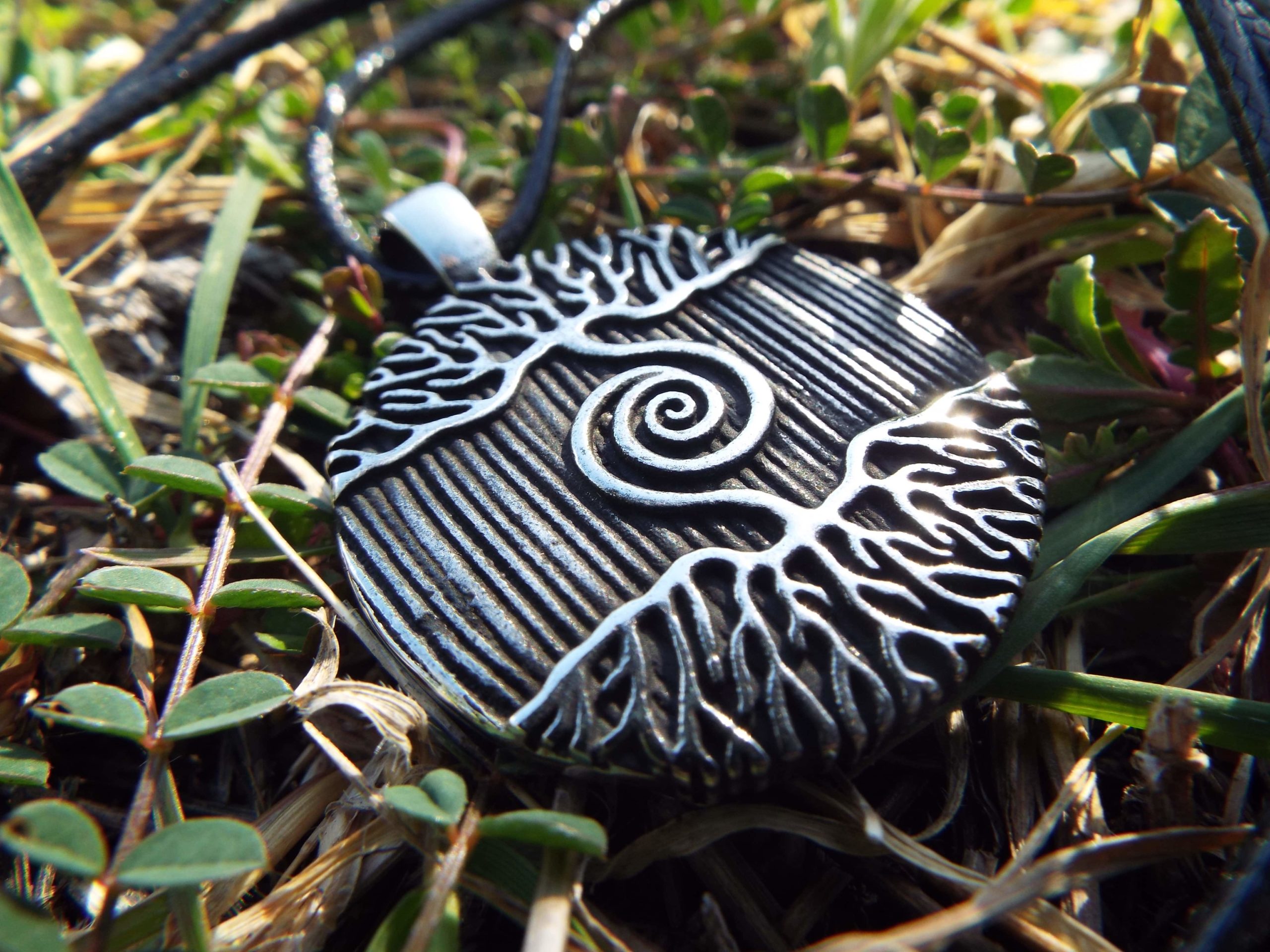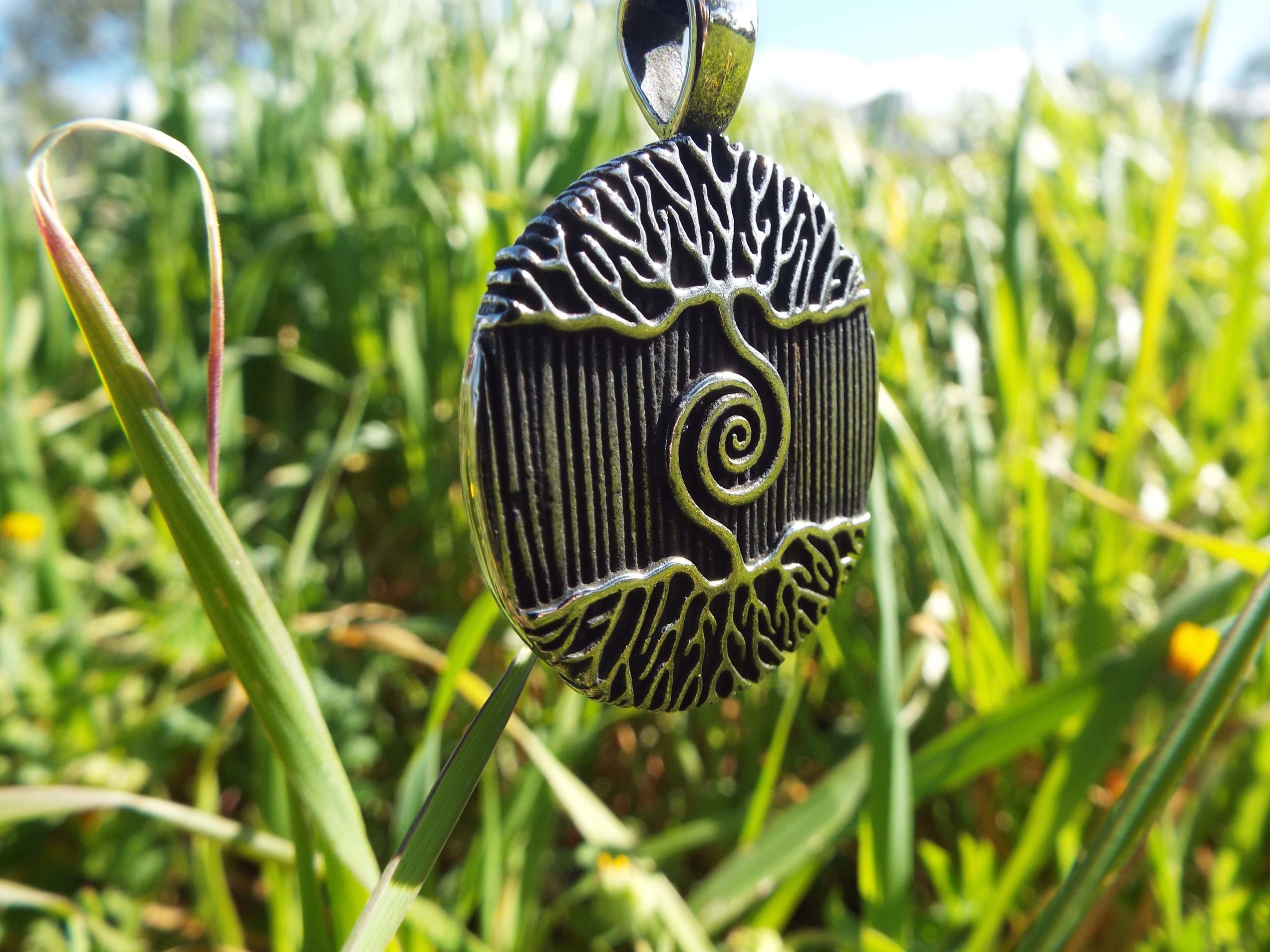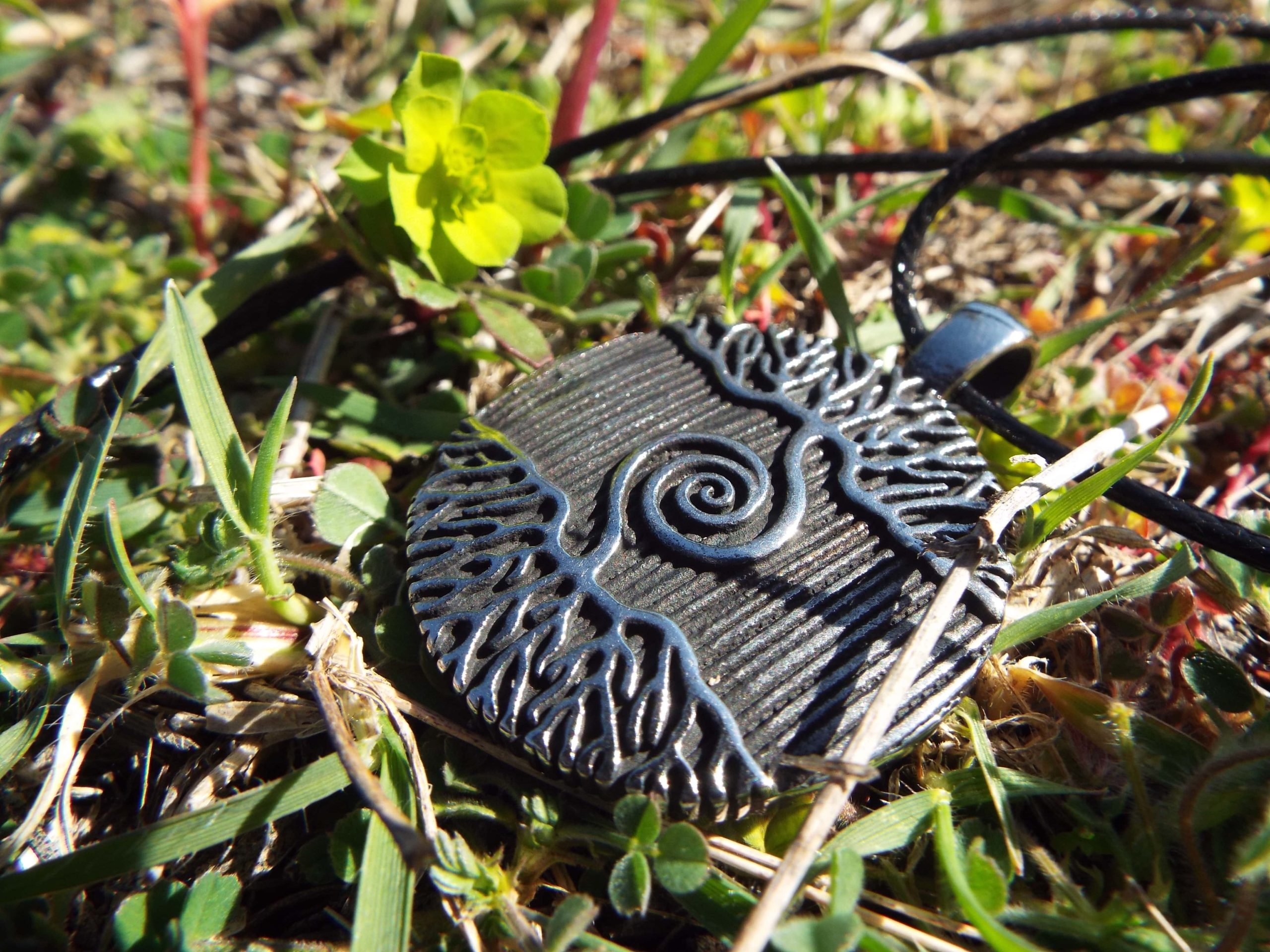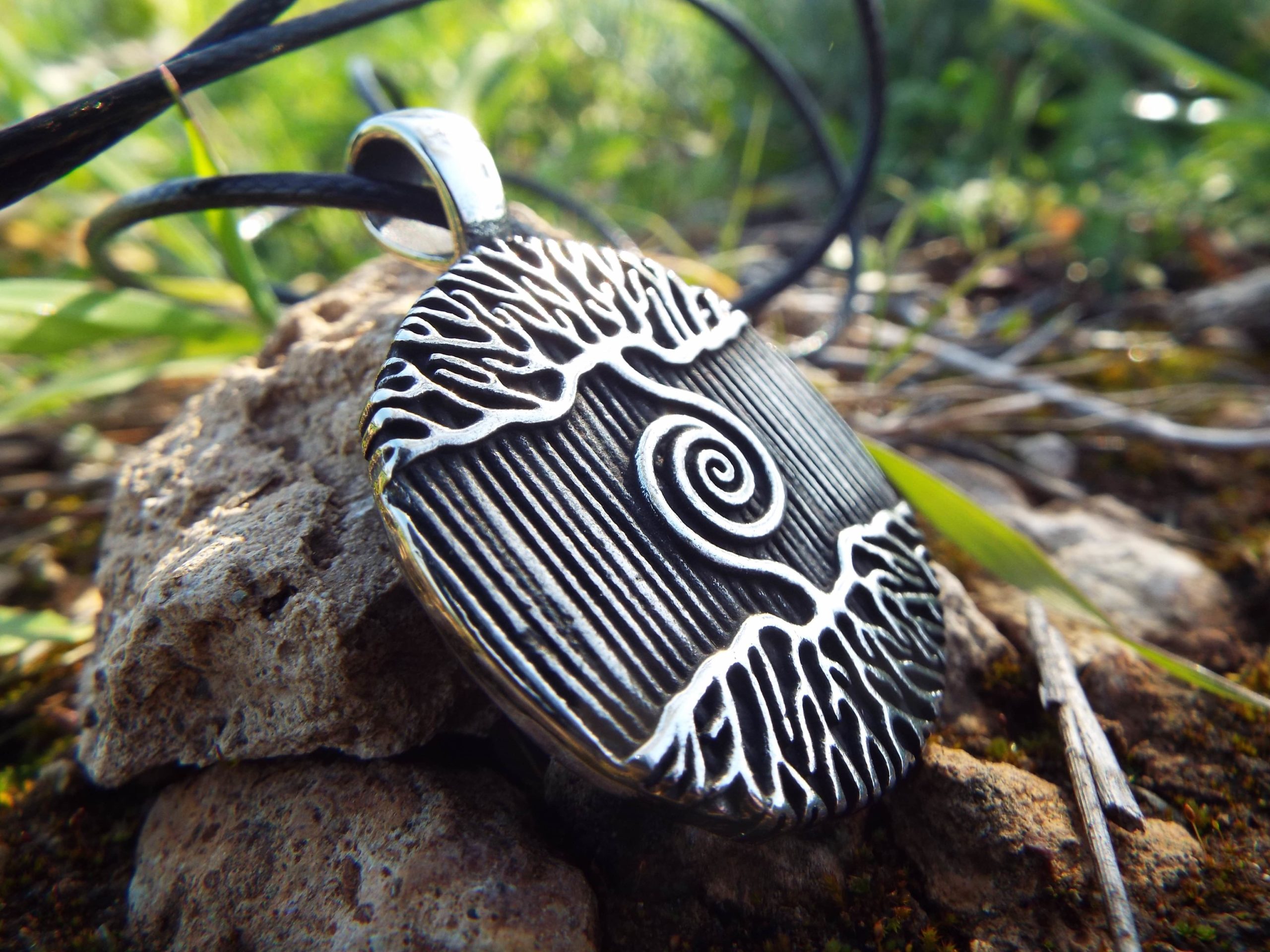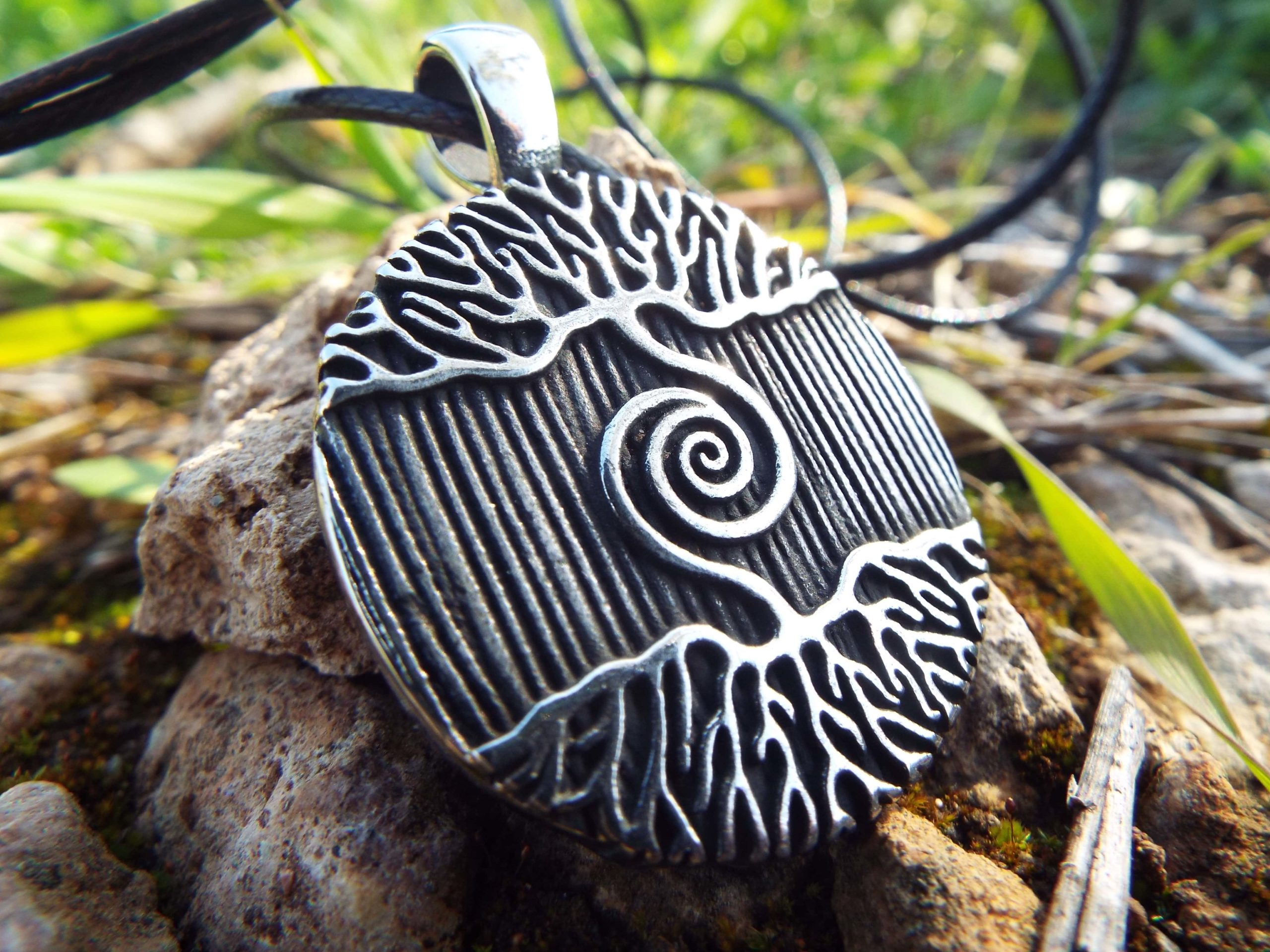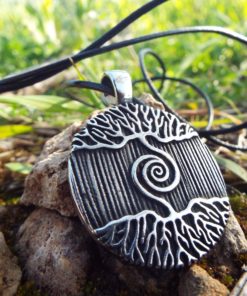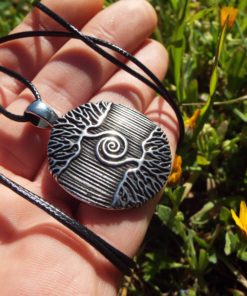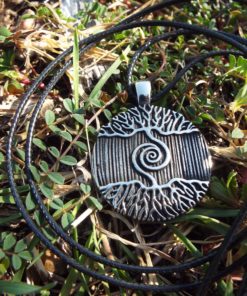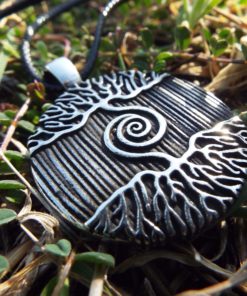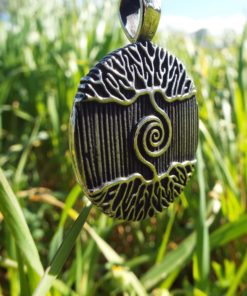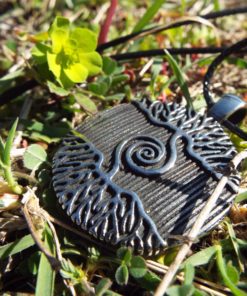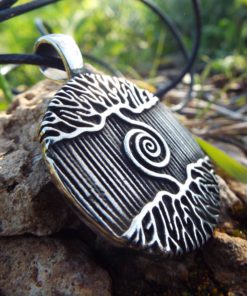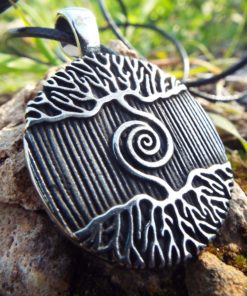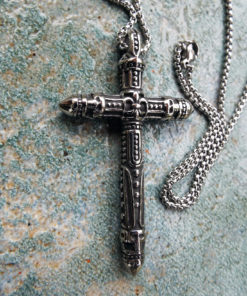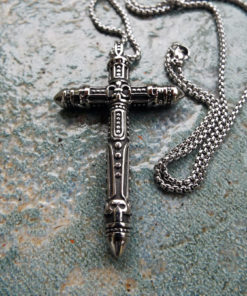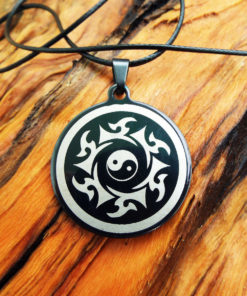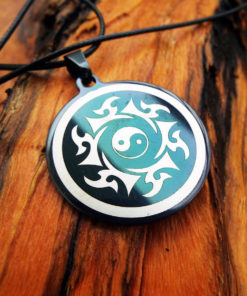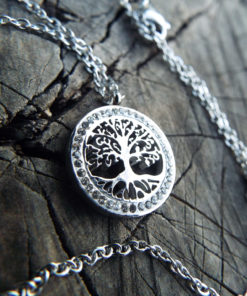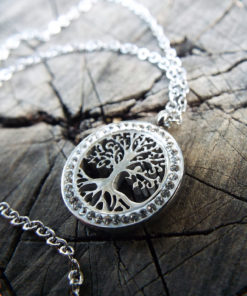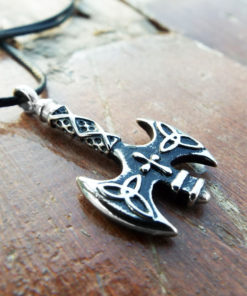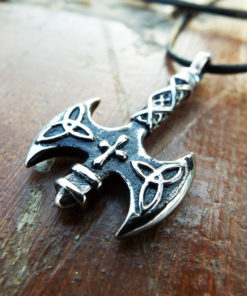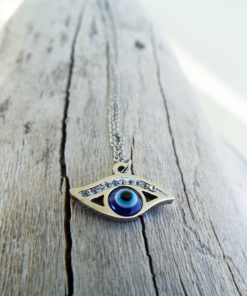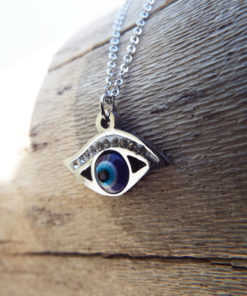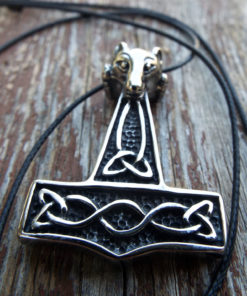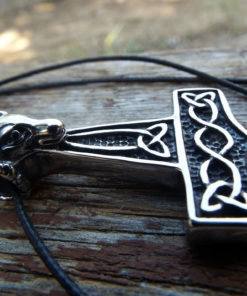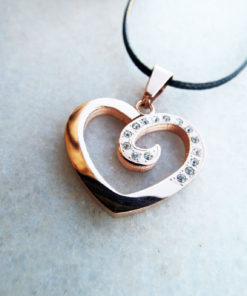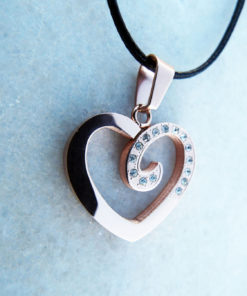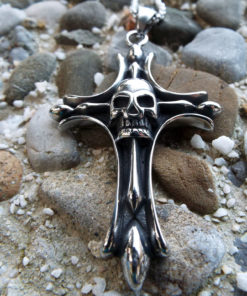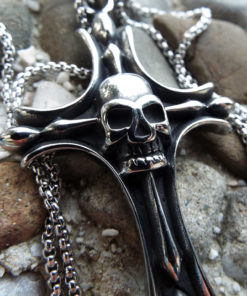Egyptians considered the Tree of Life to be the tree in which life and death are enclosed. The direction East was associated with the direction of Life, the direction of the rising Sun, and the direction West was seen as the direction of death, of under-world, because Sun sets in the West.
Within the Nordic cultures we also find a Tree of Life called Yggdrasil. It is a massive holy ash tree where Gods assemble daily. the tree provides a magical springwater of knowledge. An eagle is on the top of the tree and a serpent is coiled around the roots of the tree. The eagle and the snake hate each other.
On the top of the above tree is the symbol of Thor, the eagle. The dogs guarding the Tree emulate the guardian lions depicted in Byzantine works.
The Celtic tree of Life is often drawn showing the branches reaching skyward and the roots spreading out into the earth below symbolising the Druid belief in the link between heaven and earth.
Trees were an important aspect of Celtic Culture. They provided shelter and food, and warmth through fire wood. They also acted as a home for other animals, birds and insects. The Druids would hold their classes and meetings under the trees and, when clearing a settlement, the ancient Celts would always leave a tree standing in the centre.
Spiritually, the Celts believed that trees were the ancestors of man and had a connection to the other world. The most sacred of trees was the oak, or ‘daur’ in Celtic, which is where we get the modern word ‘door’. So the oak tree, literally would have been the door to the other world.
The Tree of Life exists in many cultures, religions and mythologies, including those of Ancient Egypt, China, the Kabbalah and the Mayans.
Spirals are some of the oldest geometric shapes in ancient artwork dating back at least to the Neolithic period–thousands of years before writing. As such, we know very little about their religious beliefs and, at best, can guess about the general meanings of symbols based on context.
Because of its connection with mother goddesses, the spiral is a very feminine symbol, representing not only women but also a variety of things traditionally associated with women. Besides lifecycles, fertility, and childbirth, the spiral can reference intuition and other more internal concepts associated with women.
Life cycles and cycles of the natural world create change. The old dies away so the new can come forth. Each of us progresses from child to adult to old age. As such, the spiral is not a symbol of stagnation but rather of change, progression, and development. It embraces these things as good and healthy and helps one to accept change even though we often are more comfortable retreating into tradition and old, standard ways.
Spirals are sometimes seen as watery symbols. Water is mutable, always changing and not having permanence. It also ripples in circles. Finally, water is a feminine element along with earth. (In comparison, fire and air are masculine elements.)
The measurements are as follows:
3,6cm long (1.41 inches)
3.6cm wide (1.41 inches)
The piece will be sent with an adjustable black cotton strap but it also looks great with a silver chain:
https://www.laurelnymph.com/product-category/chains/
If you have any questions feel free to ask!
Happy buying 🙂
